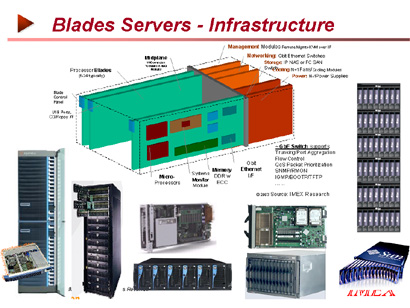
Blade Computing Comes of Age
Click on Executive Summary, TOC, References, and keynote presentation for additional information.
Doing More with Less
 |
Until recently, most data center computing has been performed by expensive, monolithic mainframe or UNIX SMP servers, fine tuned to run few specific workloads efficiently.
Pressured by CEOs to “do more with less” in this challenging economic environment improving the productivity of IT assets has become a top priority for CIOs, given the average CPU running around 25% capacity while stranded direct-attached storage being utilized below 50% in many large companies.
Deploying a multitude of rack-mount xU-servers, each running their own OS on their own individualhardware, has been no solution either, since they could not scale due to lack of a shared fabric backplane.
The real cost reduction opportunity in computing lies in eliminating monolithic, proprietary servers altogether. Replacing them with standard high volume, low-cost, modular servers running industry-standard Windows/Linux OS and augmenting them with advanced access, availability, and administration functions, emulated from expensive mainframe or UNIX environments, will bring about the best of all worlds.

1474 Camino Robles |
Market Segmentation by Platform
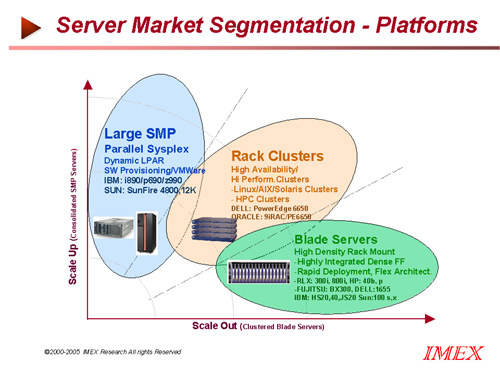
One of the key contributions offered by the new generation of blade servers lies in their ability for hardware provisioning through segmenting server resources at the blade board level. Each of these blade resources may be allocated to one of the operating system instances while achieving scalability through simple plug-ins of additional blades. This form of provisioning provides a high degree of fault tolerance, simplifies the hardware upgrade process, and allows hardware to be logically partitioned to run different applications at different performance levels.
Thus, a diversity of shifting peak loads can simply be handled flexibly through software provisioning of these blade resources. This puts the blade servers at a distinct advantage for adoption in a variety of environments from small businesses to large enterprises handling a variety of loads, as compared to the inflexibility of large mainframes/UNIX based SMP servers best suited only for certain types orkloads.
Market Segmentation by Applications
The emergence of low-cost Linux/Windows-based volume servers and clustering/interconnect fabric technologies, together with virtualization and software provisioning, is allowing blade servers to be adapted in various applications addressing different vertical markets. These applications include OLTP, decision support, numeric intensive computing, and streaming content.
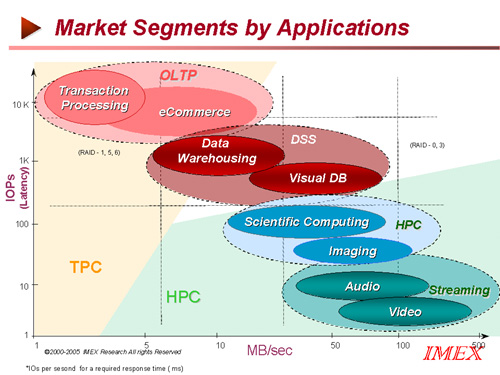
Because of their flexibility to take on software provisioning, blade servers can easily address various specialized requirements of Tier 1, 2 and 3 applications, on the Web or in the Data Center.
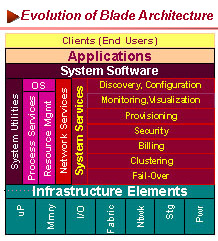
Industry standard blades actually facilitate convergence of computing (channels) and Networks (nodal interconnectivity) to achieve true distributed computing as epitomized ultimately in grid computing of the future.
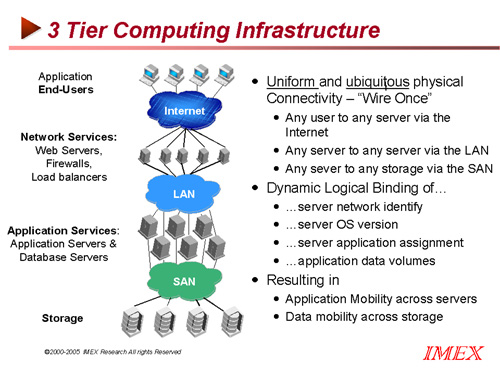
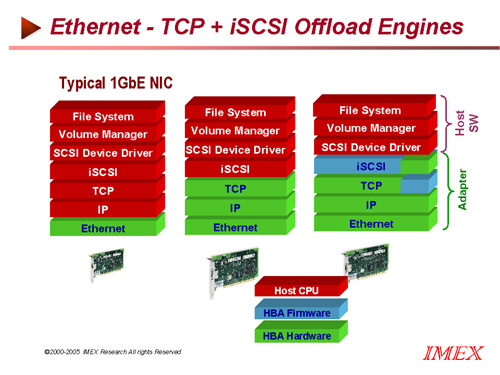
Growth Drivers for Blade Servers
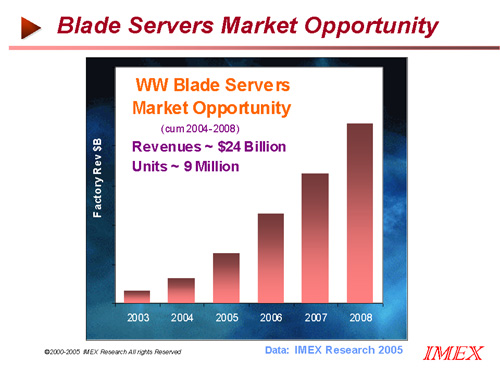
The integrated modular architecture of blade systems providing Virtualization, Provisioning and Self-Driven Automation capabilities already are starting to strike a pleasant chord with CIOs.
Some of the major growth drivers accelerating the adoption of blade servers include:
- UNIX to Linux Migrations to leverage cost effectiveness of open source Linux
- HPC Linux Clusters have fueled an explosive growth in academia and national laboratories for scientific computing and are migrating to the commercial world for bio-informatics, Wall Street decision support financials, medical visualization, and other applications.
- Server Consolidation onto fewer servers with virtualization of resources, provisioning and lights out automation capabilities
- Blades Density to provide economic benefits in real estate and operational metrics.
Click here for additional information including vender positioning index (Strategy/Vision vs. Delivery/ Execution)
Click on the following for additional information or go to http://www.imexresearch.com.
IMEX Research, 1474 Camino Robles San Jose, CA 95120 (408) 268-0800 http://www.imexresearch.com
If you wish not to receive any IT information/news from IMEX, please click here
